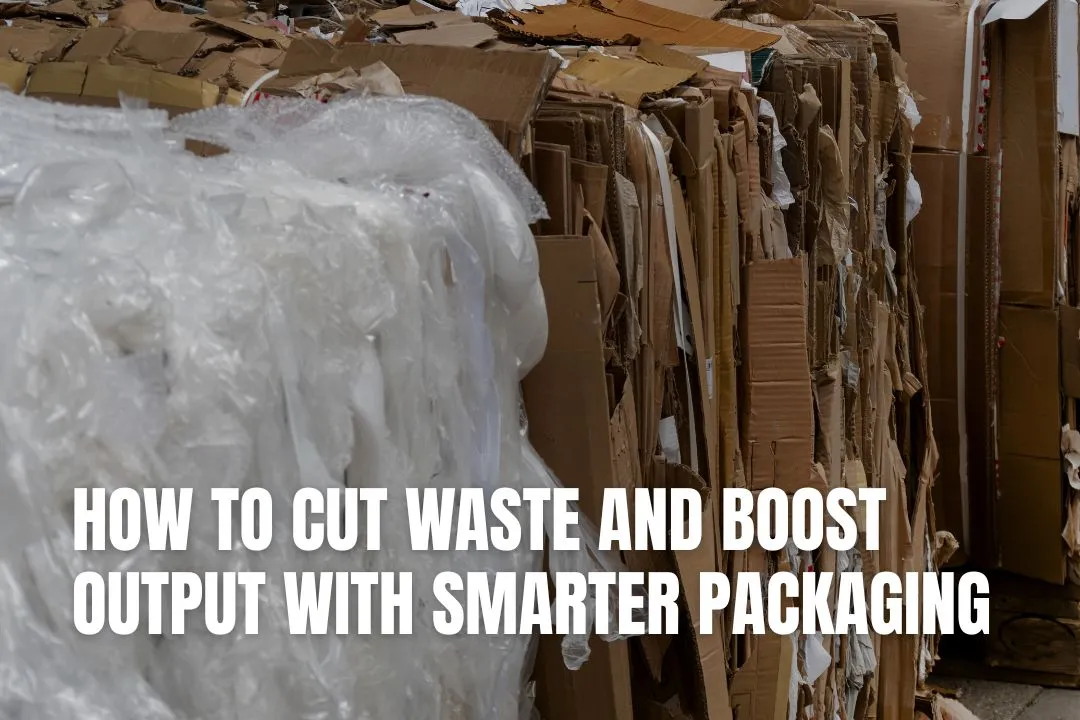
Every company seeks ways to reduce expenses while maintaining a strong production level. One area that quietly drains money is packaging. Outdated tools, manual tasks, and inconsistent handling can raise costs without being immediately apparent. Materials get wasted, products are rejected, and time is lost. Over the course of weeks, these small gaps become significant problems.
Thankfully, packaging has advanced. More innovative methods can now solve many of these long-standing issues. By focusing on flexible systems, live data, and adaptive controls, businesses can improve speed and quality without overspending.
In this article, we will outline clear steps that any manufacturer can take to minimise losses and enhance results. Each approach is practical, sustainable, and designed to support growth.
Before upgrades, it is essential to know where performance drops. A packaging audit gives insight into problems that may not be visible during daily operations.
For example:
With this information, businesses have a clear picture of current challenges. That baseline makes it easier to plan realistic improvements and measure gains once new systems are in place.
Modern production demands constant adjustment. Different products require different shapes, sealing methods, and batch sizes. Machines built for a single function often slow down entire lines, create unnecessary waste, and make it difficult to meet changing customer needs. More innovative automated systems address this by combining multiple capabilities into one solution. They shorten changeovers, reduce errors, and maintain consistent quality across varied formats.
To achieve these results, businesses often turn to trusted providers with proven expertise. One such example is Utien, a company recognised for its versatile technology. In fact, businesses using Utien Packaging Equipment experience faster adaptation, lower operating costs, and improved product reliability. By focusing on both performance and durability, these systems allow manufacturers to handle complex demands without the need for frequent replacements.
Key advantages include:
Together, these benefits make automation a crucial step for companies seeking to remain competitive.
Replacing entire lines is costly and disruptive. Modular upgrades offer a smoother path to better performance. They allow gradual improvements without halting production completely.
Key benefits include:
Step-by-step upgrades reduce risk while keeping costs balanced. Over time, these focused changes create leaner operations, helping businesses maintain reliability without the shock of total replacement.
Visibility is essential in packaging. Sensors and connected tools now make it possible to watch every stage as it happens. This level of insight enables small issues to be identified and addressed early. A minor change in heat levels or film tension, if left unchecked, can lead to entire batches being wasted.
Key advantages include:
By acting quickly, managers maintain stable production and protect product quality. Real-time monitoring also supports stronger quality control, ensuring goods last longer and meet customer expectations. The data collected builds a pattern that helps identify recurring weak points. Over time, this insight not only prevents mistakes but also supports continuous improvement across the production floor.
Different products require different settings. Static machines cannot meet this need, resulting in waste and poor outcomes. Adaptive control addresses the problem by automatically adjusting settings. This ensures the right temperature, draw length, and cutting pattern for each run. It also helps teams respond faster to changes in production requirements. Over time, the system learns patterns that enable even more accurate adjustments.
In practice:
By adopting adaptive systems, companies can reduce waste and establish more sustainable practices. The result is greater efficiency, reduced costs, and smoother day-to-day operations.
Efficiency does not come from sweeping changes but from steady improvements. An audit highlights weak areas, automation adds flexibility, and modular upgrades create affordable progress. Real-time monitoring and adaptive controls reduce waste while maintaining consistency. Together, these strategies turn packaging into a source of strength rather than cost. In a competitive market, these steps bring stability, lower risk, and long-term growth without disrupting daily production.
A packaging audit provides a clear, data-backed picture of your current operations. It shows you exactly where you are losing money, wasting materials, or experiencing downtime. Without this baseline, it’s difficult to measure the true impact of any improvements you make.
For most businesses, upgrading in stages is more practical. Modular upgrades are less disruptive to your production schedule and more manageable for your budget. This approach allows you to target the weakest points in your line first and build momentum over time.
Smart automation is designed for flexibility. Unlike older machines built for a single task, modern systems can quickly adapt to different product shapes, sizes, and packaging requirements. This reduces the time needed for changeovers and ensures consistent quality no matter what you are producing.
Adaptive control is a feature in modern packaging machinery that automatically adjusts operational settings, like heat or film tension, to suit the specific product being packaged. It eliminates the trial-and-error process, which means less material is wasted during setup and production runs.
Absolutely. By reducing material waste, minimising product rejects, and cutting down on operational downtime, you directly lower your production costs. These efficiencies lead to higher output and improved profit margins, making smarter packaging a valuable business strategy offered by experts like Robin Waite.